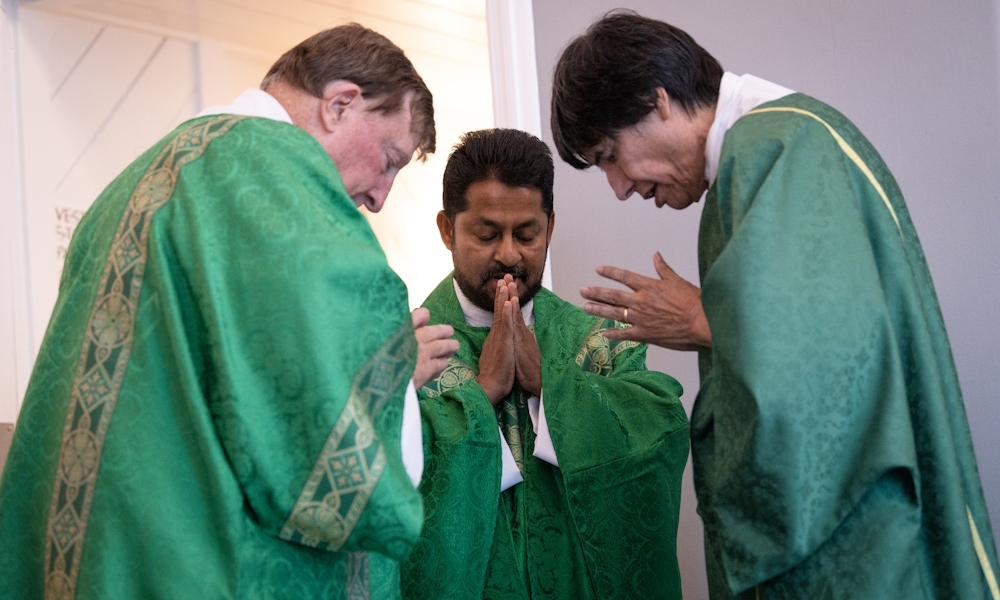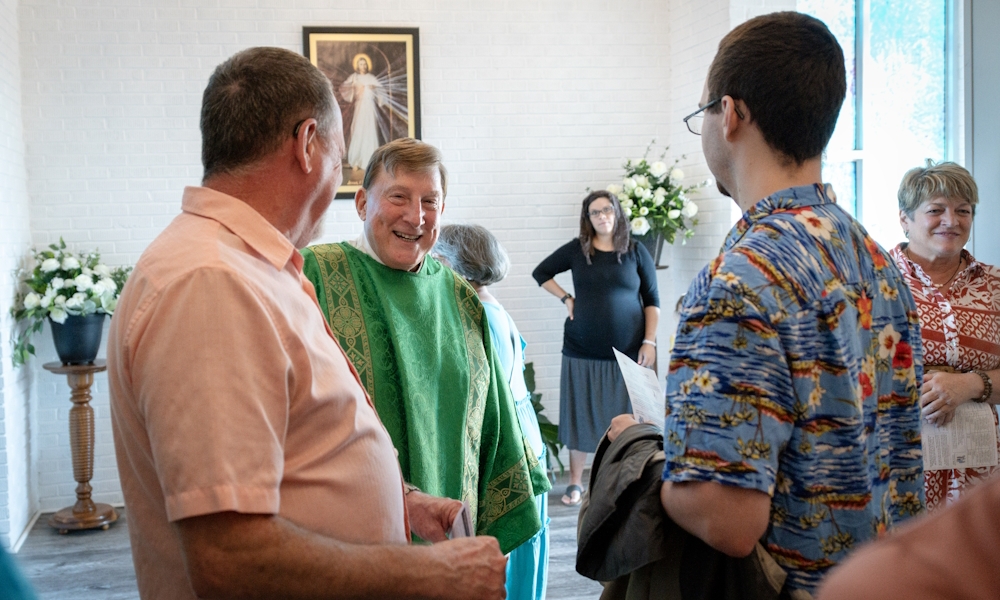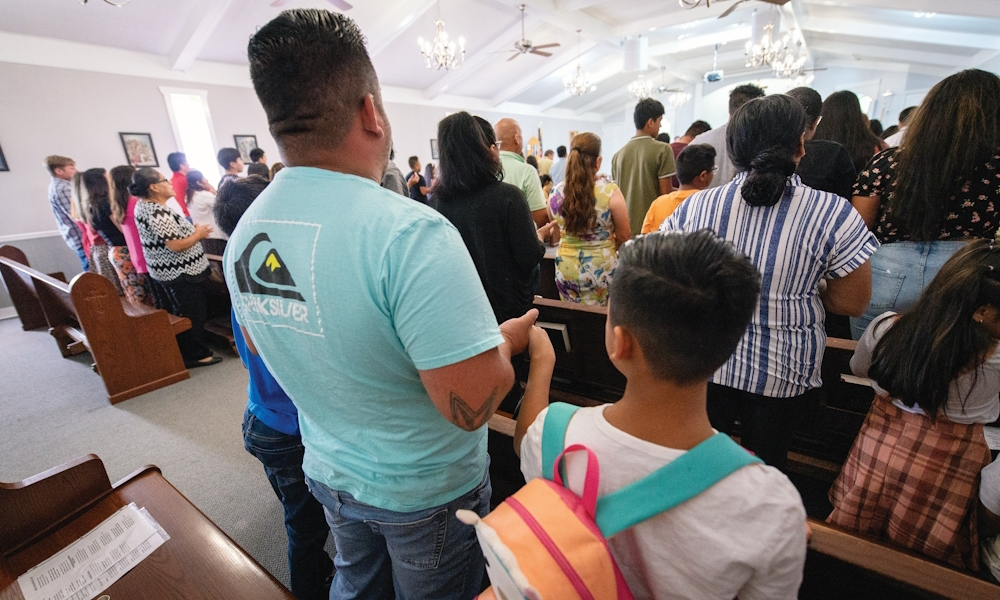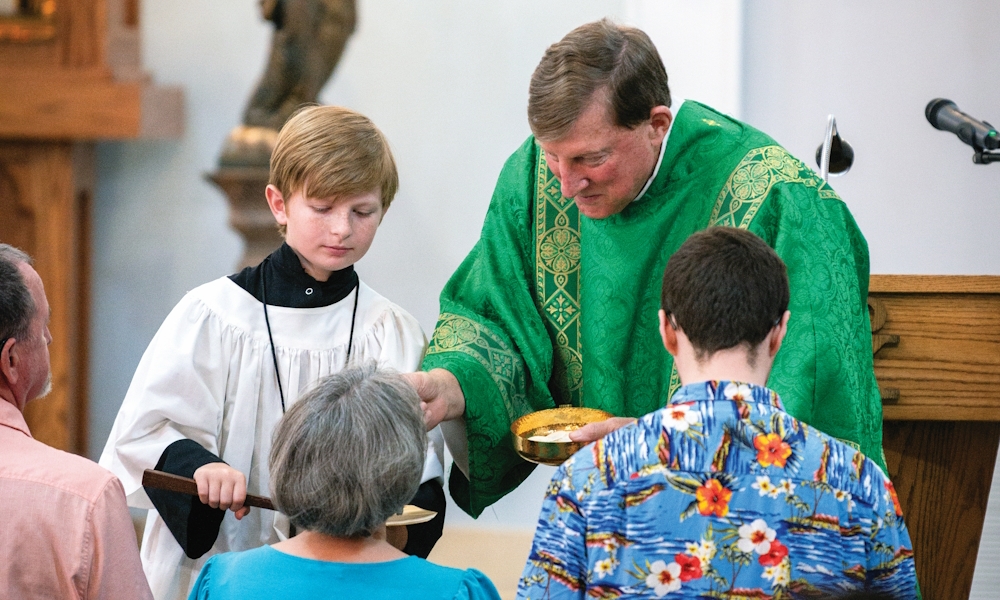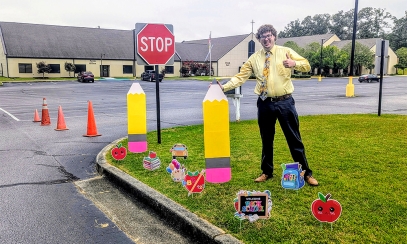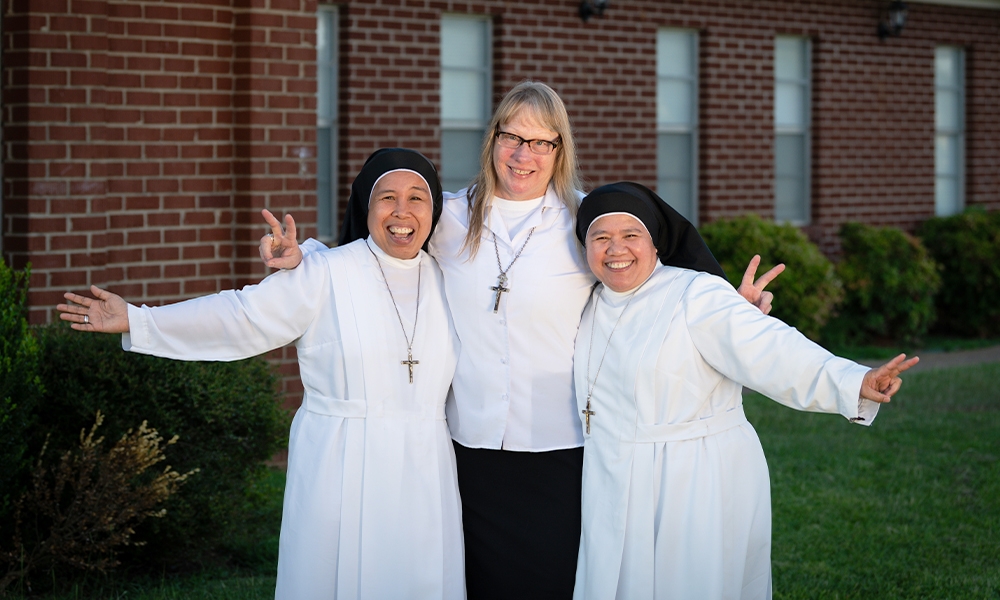
‘We are mission’
Catholicism in Alabama has a mighty long history, going all the way back to Hernando DeSoto in the first half of the 16th century. However, the seeds of the faith did, at times, lay dormant. In some parts of the diocese, as in the Lawrence County area, there were periods of more than 100 years without a Catholic presence.
Catholicism in Alabama has a mighty long history, going all the way back to Hernando DeSoto in the first half of the 16th century. However, the seeds of the faith did, at times, lay dormant. In some parts of the diocese, as in the Lawrence County area, there were periods of more than 100 years without a Catholic presence.
The trend started to change, however, in 1992, when two Daughters of Mercy, Sisters Mary Cronin and Gabrielle Gattone, traveled to the northwestern part of the state and began working in the community. After a year of making connections with the few Catholics in the area, the sisters were called elsewhere, opening the door for Deacon Bob Laremore to take their place. As a member of the Glenmary Home Missioners, Deacon Laremore brought with him a unique and well-suited outlook.
Glenmary missionaries make it their goal to go into poor counties, primarily in Appalachian regions, to minister to populations who are largely “unchurched” and have Catholic populations of one percent or less. At the time of Deacon Laremore’s arrival, the Catholic population totaled a whopping one-tenth of a percent, and the “unchurched” numbers unbelievably totaled more than 40 percent.
In the first four years of Deacon Laremore’s ministry, Bishop David E. Foley would dedicate Resurrection Catholic Chapel in Moulton, and the congregation would grow from four to 35 members. He was able to accomplish the small, yet significant, growth courtesy of the Glenmary model of mission: ministry to the Catholic community, ecumenism, social outreach, evangelization, and collaboration with the Church.
While the deacon excelled in all areas of Glenmary’s fivefold ministry model, his efforts in evangelization were beyond admirable. In 2000, seven years after the deacon’s arrival in Lawrence County, a staggering eight thousand home, business, and church visitations had been made and numerous articles in local newspapers were written and published. Some years later, Deacon Laremore even set up a mini recording studio in his home and launched a Sunday morning program, “The Catholic Perspective.”
“This community works hard to bring the Catholic presence to this area, by living their daily lives as example, and witnessing their faith,” wrote the deacon in one of his community newsletters in 2003. “They remain committed to a missionary vision and remain committed to this community through the ups and downs of mission and life.”
The missionary spirit permeated every facet of the chapel’s faith community. Being Catholic took effort; so much so, that when an out-of-state priest came to visit, he remarked afterward, “I began to realize that I and, maybe many others like me, take our Catholic faith for granted.”
In 2009, Deacon Laremore retired due to illness. The bishop at the time, Bishop Robert J. Baker, reached out to local resident, and then candidate for the permanent diaconate, Rick Chenault, Sr., and asked him to consider becoming the coordinator of the tiny chapel.
Chenault and his wife, Peggy, had moved to Lawrence County in 2001 and had been praying for a fully functioning parish with Mass every Sunday. Despite Deacon Laremore’s best efforts, Mass had only been offered about every two weeks.
Chenault worked diligently at continuing Deacon Laremore’s work with the Catholic community in Moulton and the surrounding area, using his trademark smile and his penchant for welcoming others. “A big pat on the back for Deacon Rick for taking this chapel from what Bob Laremore had built to what it is today,” exclaims Robert Cunningham, the chapel’s volunteer communications director.
“Rural ministry is watching God work in powerful and amazing ways!” says Peggy Chenault, wife of Deacon Chenault. “It’s trusting Him to send you who and what you need when you need them.” In 2013, Chenault was ordained to the permanent diaconate for the diocese and the chapel gained an invaluable asset, Deacon Bob Catanach, who would come to serve the Hispanic community. In 2021, God sent the chapel another unexpected blessing, two Reparatrix Sisters of the Sacred Heart.
The missionary spirit that Deacon Laremore helped cultivate in the county when he arrived 30 years ago has been fortified by Deacon Chenault’s leadership, Deacon Catanach’s ministry, the presence of the sisters, and the woman responsible for the sisters’ arrival, Marynell Morris.
Of course, the faithful and their part in the mission need not go unnoticed. Some parishioners are transplants from Annunciation of the Lord Catholic Church in Decatur, and while the love for the parish and the clergy, especially Father Charles Merrill and Father Chuck Deering, is evident, the draw to the little chapel is inescapable. For Kandy Mathis, once she and her family attended Mass one weekend, she explains that her heart was powerfully drawn to the community. “We’re just one big happy family,” she says with a smile.
Mathis’ son, Zak, at the age of 30, shares his mother’s feelings. “It’s very much, for lack of a better term, a family feel here.” Of course, that could mean “being in everybody’s business,” but as the patriarch of the Mathis family, Larry, explains, “If I'm having a hard day, Midge (a fellow parishioner) can usually tell, and she'll come up and just pat me on the shoulder … It’s a knowing and a loving.”
Parishioners from both language communities have very similar feelings about the little chapel with a big heart. Parishioner of three years, Jocelyn Hernandez, remarks, “This church is very important to me. It’s a very tight community.” Whether it be Angelica Rodriguez remarking about the growth of the chapel, or Laura Arroyo expressing appreciation for the church community following her son’s death, or Felicia Brewer, an English speaker, sharing her love of attending the Spanish Mass because of the “beautiful, wonderful people,” the closeness of the parish family is unmistakable.
Long-time parishioner Leo Sabatini offers keen insight into the chapel. Being able to see the chapel develop over the years from Mass in a local music store to their current location, he attributes the maintained Catholic presence to the faith of the community. “God’s been very faithful to us because we’ve been faithful to Him.”
The rural Church in Lawrence County is thriving because the faithful have dedicated themselves to the chapel’s mission: to bring Christ’s presence through the Holy Eucharist to all Catholics in Lawrence County and the surrounding areas.
That mission, as John Poole, another transplant from Annunciation of the Lord Parish, points out, is “what a true Church is.”
“This group of parishioners have not only fed the poor, but showed them how to fish,” wrote Deacon Laremore. “They have not only called for social justice, they have worked for social justice. They have excluded no one; they have embraced everyone from the Hispanic and black communities to the Native American community. … This is what a missionary community is. This is what every Christian and parish must be. We are the Catholic Church. We are mission.”

